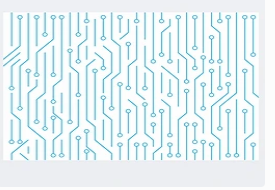As a kind of waste circuit board recycling technology, pyrolysis technology has the advantages of larger crushing particle size and lower energy consumption in the mechanical crushing process, making this process scheme has a broader application prospect than other methods.
Pyrolysis technology, as an efficient waste treatment and recycling method, can play an important role in the recycling of waste circuit boards. With the further in-depth research on the basic theory of pyrolysis technology and the research and development of pyrolysis equipment, it will surely become one of the most important methods for recycling circuit boards in waste electrical appliances in the future.
Although the current related research on the measurement of bromine-containing products from the pyrolysis of circuit boards is limited to qualitative analysis, or analysis based on the total amount of bromine, accurate quantitative analysis and detection of specific bromine-containing substances cannot be achieved., So it cannot provide enough complete information to determine the transformation and migration of bromine-containing flame retardants in the pyrolysis process.

However, many researchers have carried out some attempts to remove bromine-containing pollutants based on pyrolysis technology, and have made some breakthroughs.
If improper technology and equipment are used to recycle it, the circuit board will generate more obscuring smoke, elemental bromine and hydrogen bromide gas, brominated phenol, polybrominated dibenzodioxin/ Toxic and harmful substances such as furan. These substances not only cause incalculable serious harm to the environment, but also corrode processing equipment and reduce the quality of refined oil. Therefore, whether it is from the perspective of the safe disposal of circuit boards or the recycling of circuit boards, it is necessary to have a clear understanding of the conversion and migration of bromine-containing flame retardants during the pyrolysis of circuit boards, and pay attention to the heat of waste circuit boards. Solve the problem of secondary pollution control and product debromination in the treatment process.
The circuit board condenses the pyrolyzed gas from the reactor. Obtain condensable gas and liquid pyrolysis oil. The components such as metal and glass fiber remain in the reactor to form a solid residue, and then the metal and non-metal components are separated and recovered by physical methods. The advantage of this process is that it can prevent the temperature rise caused by excessive crushing, thereby effectively avoiding the escape of toxic and harmful gases.
At present, the recycling of circuit boards is mostly based on methods that focus on the recycling of precious metals, such as pyrometallurgy and hydrometallurgy. The waste gas, waste water and waste residue produced during the treatment process can easily cause serious secondary pollution. The non-metallic components, which account for more than 50% of the total mass of the circuit board, are relatively less involved in the recycling and harmlessness. Except for a few used as fillers, they are mostly treated as landfills.